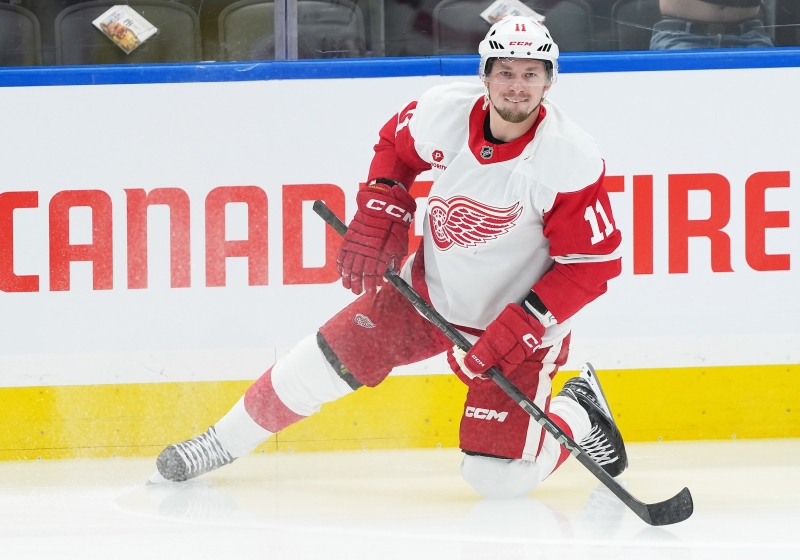Minnesota sports fans have a very strong sense of fairness. It’s a sentiment common among middle children and others who feel passed over, likely a result of some simple math.
In the 26 seasons of the North Stars plus the 25 seasons of the Wild, you’d expect one or two Stanley Cups in Minnesota just based on the number of opponents among whom to distribute those championships.
Then, watch from afar as the Dallas Stars hoist Lord Stanley in just their sixth season (in a city that never even freezes!), and that sense of fairness calcifies into jealousy.
So, when the team owner promises Christmas morning on July 1, 2025, who can blame those fans for a bitter reaction? I’d cry too if I opened my presents, hoping for a new set of golf clubs (bona fide top-six help) and instead found a $10 Amazon water brush (a 4th-line penalty-killing center, Nico Sturm) and a $50 gift card to Second Swing (a past-his-prime Vladimir Tarasenko).
It falls on deaf ears to point out that the free agent class was unimpressive. I’ve been of the same opinion:
You’ve got all this cap space, now get creative! Find a way to use it!
But in the case of the Tarasenko trade, how much more creative does it get?
The beauty of the Tarasenko deal is in the one-year term remaining on his contract. That’s nice for any team, but specifically for Minnesota. The reason? Kirill Kaprizov’s contract extension. The Wild need to do all they can to maximize their 2025-26 cap space without putting Kaprizov’s extension at risk.
Tarasenko doesn’t just offer a viable floor at the second-line right wing (something that a 35-year-old Marcus Johansson doesn’t). He also keeps the 2026-27 cap sheet clean and flexible to reload again in the next offseason.
At the time of this writing, there are very few questions about the 2026-27 roster that can’t be answered by Marco Rossi’s contract situation. Assuming the Wild re-signs him or replaces him with a player of similar value, they have about $45 million of cap space to address the following needs in the 2026 offseason:
- Extend Kaprizov ($14-17 million AAV)
- Replace Tarasenko and Mats Zuccarello with second-line forwards (typically valued around $6-7 million AAV each)
- Replace 7th defenseman Zach Bogosian ($1-2 million AAV)
- Extend or replace RFA David Jiricek
- Extend or replace UFA Filip Gustavsson
- Extend or replace Marco Rossi
That leaves between $12 and $18 million to extend or replace Jiricek, Gustavsson, and Rossi. $12 million would be tight, but at least the plan is clear. $18 million would be incredibly flexible, unless one or both of Jiricek and Gustavsson perform far above expectations. Still, that would be a good problem to have, especially in Jiricek’s case.
Tarasenko’s contract provides the Wild with better roster flexibility than either of Brock Boeser’s or Mikael Granlund’s multi-year deals.
So, he’s cheap and won’t scare off Kirill. Now, the retort:
Is he a second-line winger?
It’s complicated. In each of Tarasenko’s past three stops (Ottawa 2023-24, Florida at the 2024 trade deadline, and Detroit 2025-26), the answer has been no. His results on Ottawa’s second line looked more like a middle-six scorer than a true second-line winger.
When he was traded to Florida at the deadline, Tarasenko mainly played on the third line with rookies Anton Lundell and Eetu Luostarinen. In those minutes, he performed with an on-ice impact more fitting of a second-line player, but deployed as a third-liner.
Tarasenko’s time in Detroit looked a lot like his time in Ottawa. Flashes of the old skill, but more of a middle-six forward than a top-six talent.
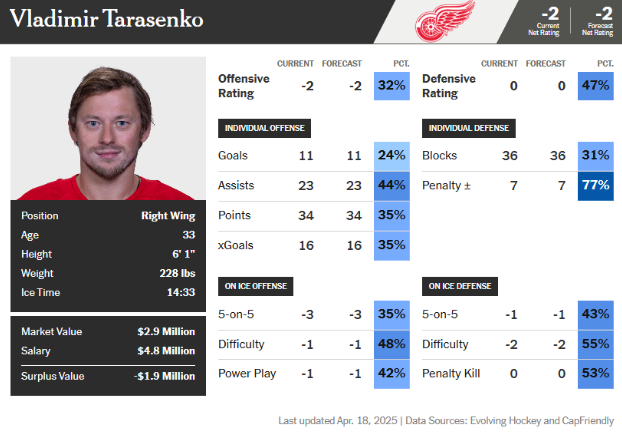
So why should it be any different in Minnesota, with Tarasenko a whole year older?
Three reasons: rest, linemates, and Kirill Kaprizov.
Consider the difference in Tarasenko’s 2024 offseason versus 2025. After he hoisted the Cup with Florida on June 24, 2024, Tarasenko had three months and 16 days of rest. This year, his final game was on April 17. That’s more than two months of offseason rest and training for Tarasenko’s Minnesota season compared to his Detroit season.
That’s about a 50% increase in rest this season compared to last. Add training camp and preseason to that, and the difference becomes even larger.
You can roll your eyes at the inevitable September report that The Russian Veteran is in the best shape of his life. The fact is that the extra rest can make a difference, especially for a player who turns 34 in December.
Barring a total failure to extend or replace Marco Rossi, Tarasenko’s linemates in Minnesota will be better than they were in Ottawa and Detroit. That could have been the reason for Tarasenko’s improved on-ice results in Florida, when he looked like a true second-liner rather than a middle-six tweener. Compare the ‘24-25 on-ice impacts of J.T. Compher and Jonatan Berggren to the ‘23-24 impacts from Anton Lundell and Eetu Luostarinen.
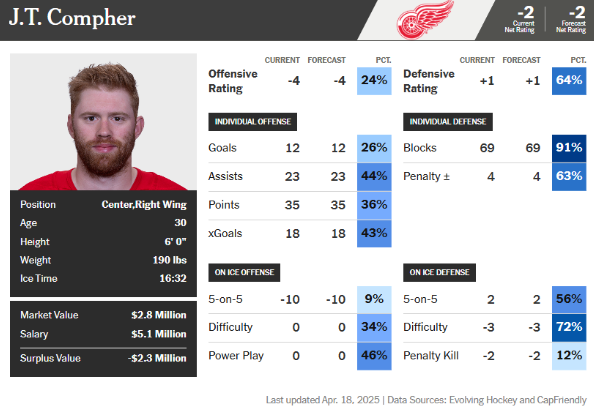
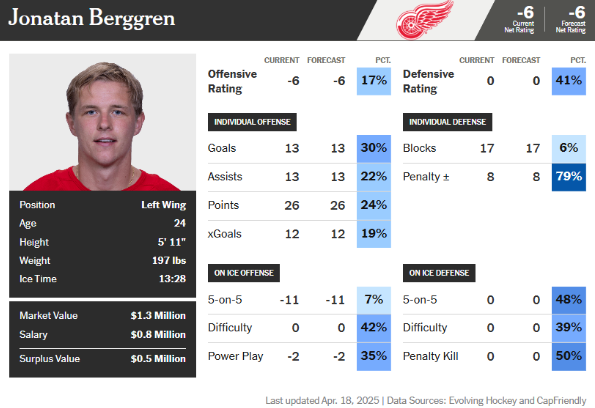
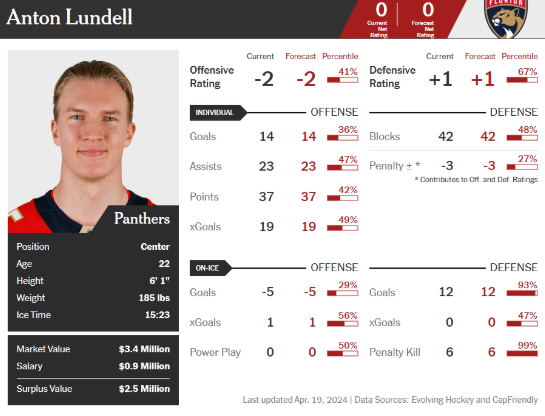
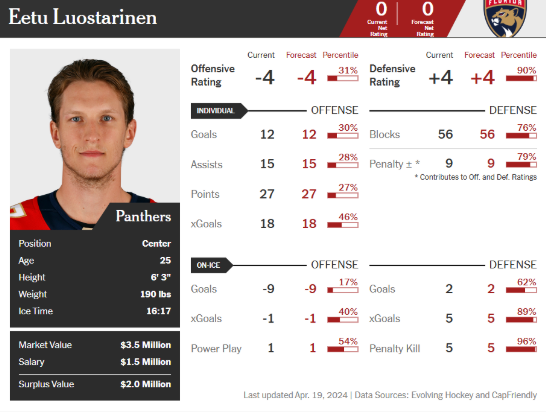
Now, which group looks more similar to Rossi and Zuccarello? The answer is Florida’s Lundell and Luostarinen. Furthermore, Rossi and Zuccarello appear to offer better support than Tarasenko’s Floridian linemates.
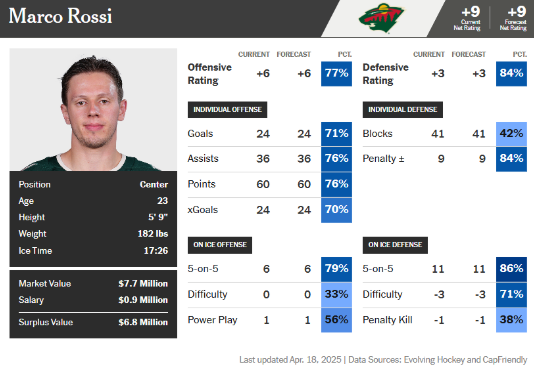
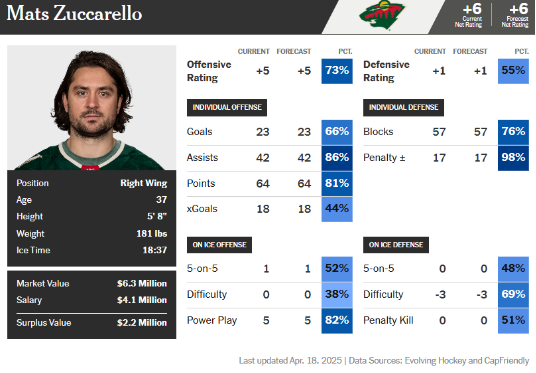
If Minnesota can get the Florida version of Tarasenko instead of the Detroit version, even two years older, it would be a boon.
That’s not even mentioning Kaprizov’s impact. No, I’m not saying that Kirill’s Russian Magic will cause supernatural improvement for Tarasenko, his countryman. But that Russian Magic should give Tarasenko better matchups via the gravity that a Hart Trophy candidate carries.
Compare Kaprizov’s matchup-dictating presence to the star power in Tarasenko’s past three stops. Ottawa’s best players (Brady Tkachuck, Jake Sanderson, and Tim Stutzle) and Detroit’s top-end talent (Moritz Seider, Lucas Raymond, Dylan Larkin, and Alex DeBrincat) don’t strike fear into opponents’ hearts the way that Kaprizov does.
Conversely, the ‘23-24 Panthers (Tarasenko’s must successful stop) sported multiple dominant talents including Sam Reinhart, Aleksander Barkov, Gustav Forsling, and Matthew Tkachuk. While the Wild can’t match that level of depth, Kaprizov’s offensive dominance will provide similar shelter for Tarasenko’s matchups.
There’s one factor that could negate all of this, which is obvious:
Tarasenko is getting older.
However, it’s entirely possible for players who were elite in their prime to maintain middle-of-the-lineup value into their early 30s. Based on Tarasenko’s past three NHL stops, Minnesota seems like a likely location for him to perform better on the second line than any other winger on the team.
Nothing is ever guaranteed in the NHL, and Tarasenko’s floor could fall out at any moment. And it’s true: Tarasenko is nowhere near the slam-dunk “Christmas Morning”-type talent that fans were promised. Unfortunately, none of those types of players made it to free agency.
Ultimately, the only certainty of this move is perhaps the most important: no matter how poorly this turns out, it’s only for one year. The Tarasenko trade can’t overspend Kaprizov’s money, and it can’t sap his hope in the team. If the 2025-26 roster underperforms, there’s plenty of ‘26-27 cap space to pitch to Kaprizov.
That’s not just an empty promise, either — it’s on PuckPedia.com right now.
Without a hint of optimism, this move makes something out of the nothing that was the 2025 free agent class. It’s a zero-price, zero-downside move that makes use of this season’s cap space rather than leaving it burning a hole in Bill Guerin’s pocket.
Forget the “Christmas Morning” quote and all the noise of expectations. Put yourself in the GM’s shoes, imagine yourself sitting behind that desk on the phone on July 1. This is managerial creativity.
It’s not Christmas morning, but this is the closest realistic move to it.
